- ABOUT US
- PROGRAM AREAS
- CONSERVATION APPROACH
- EDUCATION
- MULTIMEDIA
2021 Featured Stories
November
Nearly $21.4 Million Awarded for Coral Reef Projects and Studies
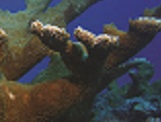
The NOAA Coral Reef Conservation Program has awarded nearly $21.4 million in grants and cooperative agreements this year to support conservation projects and scientific studies that benefit coral reef ecosystem management in seven U.S. states and territories, and internationally in the Caribbean, the Coral Triangle, the South Pacific, and Micronesia.
July
Hum, Crackle, Knock: Monitoring Reef Habitats in Florida Keys National Marine Sanctuary
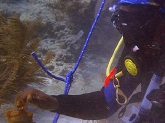
In Florida Keys National Marine Sanctuary, listening with underwater microphones is helping scientists learn about how people use reef areas, as well as how invertebrates, fishes, and marine mammals are using different reef habitats.
June
How Can the National Coral Reef Monitoring Program Help Inform Stony Coral Tissue Loss Disease Monitoring?
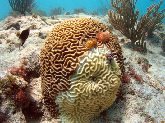
With the vast geographic coverage of the National Coral Reef Monitoring Program and the grave threat of stony coral tissue loss disease, people may wonder how the program can help inform disease monitoring.
May
100 Yards of Hope and Beyond
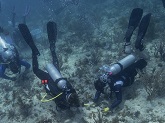
Last month, FORCE BLUE reached a new achievement with NFL Green by premiering the 100 Yards of Hope documentary during the 2021 NFL Draft in Cleveland, Ohio.
March
Researchers Stop Tissue Loss Disease in Rescued Pillar Coral
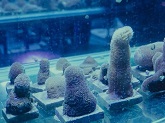
“Scientists from NOAA’s National Centers for Coastal Ocean Science have successfully treated and rehabilitated diseased pillar coral rescued from the Florida Reef Tract.
February
Oh, The Places You’ll Go!
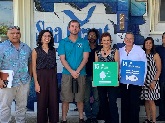
The Guam Green Growth Initiative (G3) places Guam at the global forefront of leadership in island sustainability by developing tangible solutions to sustainability challenges and contributing to a green economy for the island region. Since 2019, Guam has united with islands around the world in advancing the 17 United Nations Sustainable Development Goals through locally-informed and culturally-driven strategies.
Monitoring Coral Reefs to Understand Trends in Space and Time
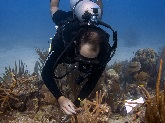
Have you ever wondered how coral scientists can track how coral reefs are doing? How can we compare one coral reef area to another? How do we know if coral reef condition is changing over time? NOAA’s Coral Reef Conservation Program monitors coral reefs at two different scales in order to help answer those questions.
January
A Decade of Coral Restoration and Sustainable Development
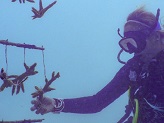
The United Nations has entered an exciting decade of focusing on marine and other important ecosystems, and the services they provide. The UN has declared 2021 to 2030 both the Decade on Ecosystem Restoration and the Decade on Ocean Science for Sustainable Development.
A Glimpse into Coral Reef Conservation

For more than 40 years, the John A. Knauss Marine Policy Fellowship, administered by NOAA’s National Sea Grant College Program, has provided graduate and professional school students with experience in host offices throughout the executive and legislative branches of government.
About Us

The NOAA Coral Reef Conservation Program was established in 2000 by the Coral Reef Conservation Act. Headquartered in Silver Spring, Maryland, the program is part of NOAA's Office for Coastal Management.

The Coral Reef Information System (CoRIS) is the program's information portal that provides access to NOAA coral reef data and products.
Work With US
U.S. Coral Reef Task Force
Funding Opportunities
Employment
Fellowship Program
Contracting Assistance
Graphic Identifier
Featured Stories Archive

Access the archive of featured stories here...
Feedback
Thank you for visiting NOAA’s Coral Reef Conservation Program online. Please take our website satisfaction survey. We welcome your ideas, comments, and feedback. Questions? Email coralreef@noaa.gov.
Stay Connected
Contact Us
NOAA’s Coral Reef Conservation Program
SSMC4, 10th Floor
1305 East West Highway
Silver Spring, MD 20910
coralreef@noaa.gov
